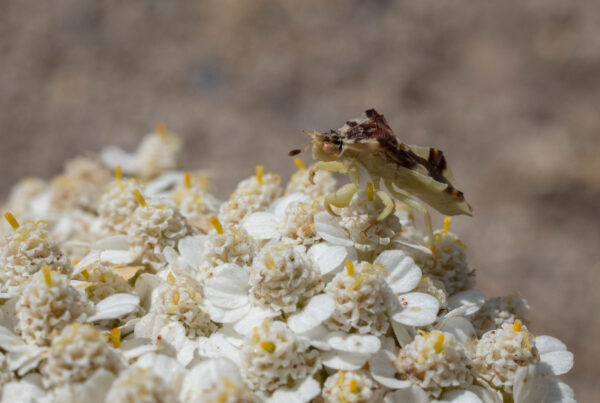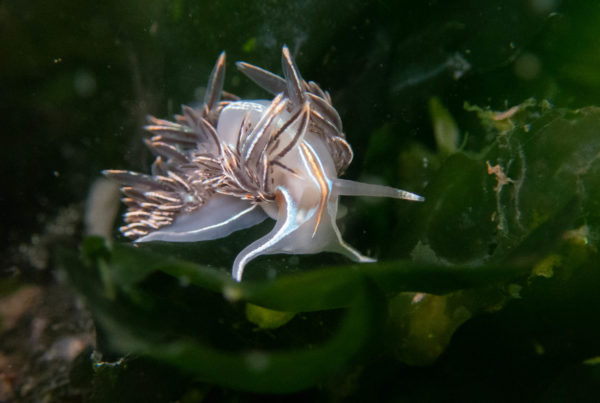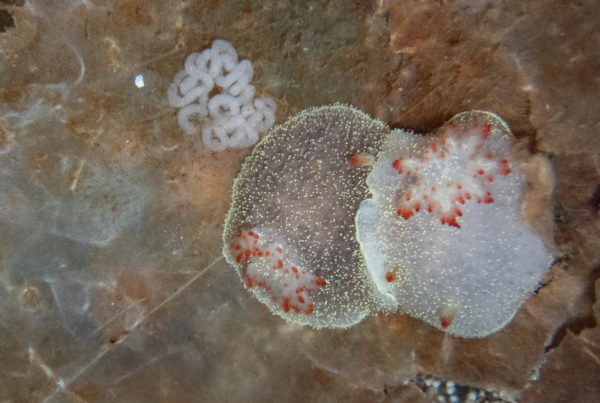Nudibranchs are sea slugs but not all sea slugs are nudibranchs. Some sea slugs look like snails, some are easily confused for nudibranchs, and then there is Hedgpeth’s Sapsucker (Elysia hedgpethi). For starters, it’s green. Not a subtle green like the Green Balloon Aeolid nudibranch (Eubranchus olivaceus), but wholly, unapologetically green. Dark green. And covered in metallic spots that look like they’re carrying a galaxy in their body.
At a glance, they differ from nudibranchs in that they have rolled rhinophores which look like tubes, open at the end. They also have a peculiar body. Slug-like to an extent, but then they go into alien mode with what can only be described as wings (technically called lateral parapodia flaps) that they usually keep folded up behind them. These wings flutter open like a cape to reveal bumpy vein-like markings radiating out from their body.
Unlike nudibranchs, which are all predators, Hedgpeth’s Sapsucker is an herbivore and instead feeds on seaweed. Specifically, the green algae in Bryopsis and Codium genus. They use their mouth to literally suck out the sap from the algae, on which they are almost perfectly camouflaged.
Almost.
I was lucky to have insider information on where to find these strange slugs and even more importantly, what type of seaweed to look for them on. Very often the trick to finding a sea slug is to look for their food. Fortunately, much of sea slug food happens to be stationary. So off I went to find the floating dock where they had previously been seen. Luck was on my side that day and after noticing a handful of medium sized Rainbow Dendronotus (Dendronotus iris) I spotted some Bryopsis growing just beneath the surface of the water on the dock and right there on top, a large Hedgpeth’s Sapsucker slug. It was casually riding the swell in the harbor up and down on the seaweed, munching away.
These slugs ingest chloroplasts from the algae and pass them into those strange wings (or flaps, if you will) and incredibly, the cells continue to photosynthesize while inside the slug’s body and they can apparently consume food from it.
It was the only one I found that day, and one of only two sea slugs along with the Rainbow Dendronotus. But the sheer abundance of Rainbow Dendros was staggering. Most were of medium size, around three inches or so, but I found a few tiny individuals that were closer to ten millimeters. This species can grow up to a foot long later in the winter.





























